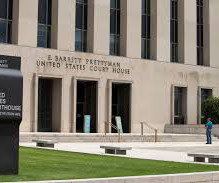Ask a Scientist: UCS Transportation Program Adds Equitable Mobility to its Portfolio
Union of Concerned Scientists
MARCH 12, 2024
In 1963, a typical car—which ran on leaded gasoline without pollution control devices— emitted 520 pounds of hydrocarbons, 1,700 pounds of carbon monoxide, and 90 pounds of nitrogen oxide every 10,000 miles traveled. Soon thereafter, it began extolling the virtues of battery electric vehicles , which it continues to do today.












Let's personalize your content